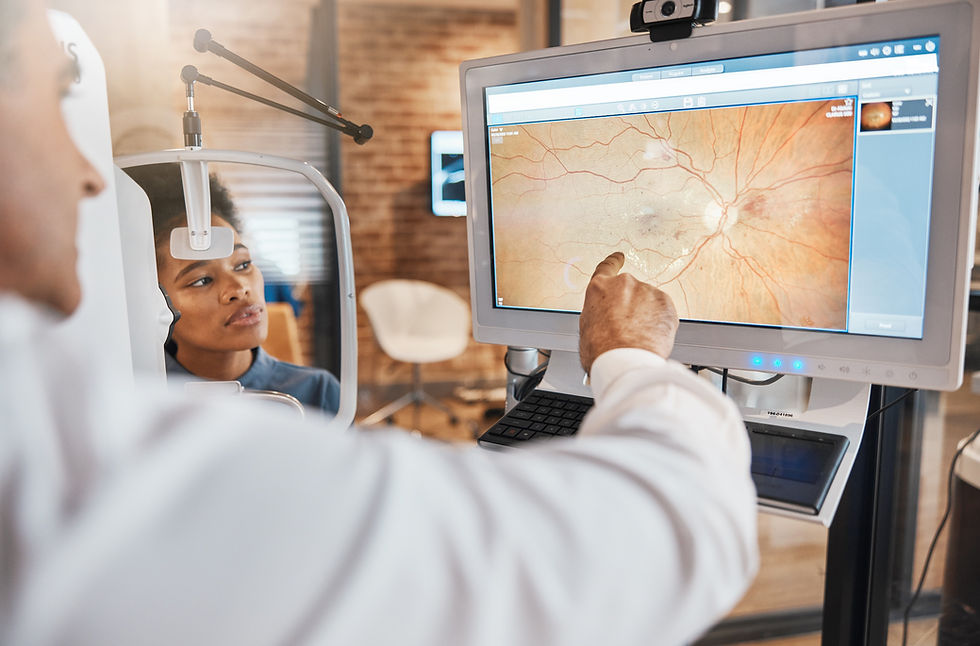Protecting Your Sight: Insights on Eye Injury Prevention from an Eye Surgeon
- by Dr. Z Aleksic

- Oct 28, 2024
- 3 min read
As an eye surgeon, I have seen firsthand how critical eye protection is. October was Eye Injury Prevention Month, an important reminder of how quickly life can change due to an unexpected eye injury. Many of these injuries are preventable with a few simple precautions. Let’s discuss common sources of eye injuries, preventive measures, and what to do if an eye injury occurs.

The Common Causes of Eye Injuries
Eye injuries can occur almost anywhere: at home, on the job, during sports, or while enjoying outdoor activities. Here are a few frequent culprits:
1. Household Chores: Cleaning chemicals, splashes from cooking oils, or DIY projects can lead to painful and sometimes permanent eye damage. Even something as simple as using cleaning sprays can cause injuries if not handled carefully.
2. Workplace Accidents: Jobs involving tools, machinery, or chemicals increase the risk of eye injuries. Without proper protective gear, debris, dust, or chemicals can reach the eye, causing anything from minor irritation to severe damage.
3. Sports-Related Injuries: Fast-paced sports like rugby, cricket or tennis often involve sudden movements and high-impact objects that could impact the eyes.
4. UV Radiation: UV exposure from the sun can gradually damage your eyes, leading to conditions like cataracts and macular degeneration. This is especially prevalent for those who spend prolonged periods outdoors without UV-protective eyewear.
Preventing Eye Injuries: Practical Tips
Prevention starts with awareness and the right equipment. Here are my top recommendations to safeguard your vision:
- Use Protective Eyewear: Whether you're doing garden work, handling chemicals, or playing sports, protective eyewear significantly reduces the risk of injury.
- UV Protection: Wear sunglasses that block 99-100% of UVA and UVB rays to prevent sun-related eye damage. For the best protection, choose wraparound sunglasses that also cover the sides.
- Handle Chemicals Carefully: When using cleaning supplies or chemicals, always read the instructions, work in a well-ventilated area, and wear eye protection if there's a risk of splashing.
- Follow Workplace Safety Protocols: Many jobs come with occupational risks to eye health. Follow safety guidelines rigorously and wear the appropriate eye protection. The most common eye injuries we see at our practice is from grinders and drills where the user did not wear appropriate protective eyewear.
- Teach Children Eye Safety: Kids are naturally curious and may unknowingly put themselves at risk. Educate them on the importance of eye safety and supervise them during activities that could result in eye injury.
Emergency Steps If an Eye Injury Occurs
If an eye injury does happen, it’s essential to act quickly and appropriately. Never apply pressure to the eye. Here is some basic tips:
1. Chemical Exposure: Rinse the eye gently with clean water for at least 15 minutes. If possible, use an eyewash station and visit your nearest Ophthalmologist to assess.
2. Blunt Trauma: Apply a cold compress without putting pressure directly on the eye. Avoid taking any blood-thinning pain medications like aspirin, as they may worsen any internal bleeding. Also avoid any eating or drinking of fluids, in the event urgent surgery is required.
3. Foreign Objects: Avoid rubbing your eyes. If something is embedded, do not attempt to remove it yourself. Seek immediate medical attention.
4. Cuts or Punctures: Cover the eye with a clean cloth or shield, being careful not to apply pressure. Do not rinse or remove objects stuck in the eye. Seek immediate medical attention.
Final Thoughts
Eye injuries are often underestimated but can be life-altering. Prevention is key: invest in high-quality eye protection, be mindful of potential risks in everyday activities, and educate those around you on the importance of eye safety. And if an injury does occur, seek medical care immediately. As an eye surgeon, I cannot stress enough how valuable your sight is—protect it with vigilance, and don’t hesitate to reach out if you have any concerns.
Learn more by reading my “Bush Doc” article from Drive Out magazine in 2015:





Comments